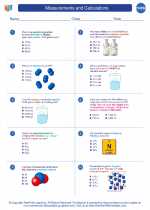Rain
Overview
Rain is a form of precipitation that occurs when water vapor in the atmosphere condenses into droplets that become heavy enough to fall to the ground. It is an important part of the Earth's water cycle and plays a crucial role in sustaining life on our planet.
Formation of Rain
Rain is formed through the process of condensation and precipitation. When water vapor in the atmosphere cools and condenses into liquid water droplets, they eventually become heavy enough to fall to the ground as rain.
Types of Rain
There are several types of rain, including:
- Stratiform rain: a steady, uniform rain that falls from stratocumulus or nimbostratus clouds.
- Convective rain: intense, short-duration rain that is often associated with thunderstorms and cumulonimbus clouds.
- Orographic rain: rain that is caused by the lifting of moist air over a mountain range, resulting in increased condensation and precipitation on the windward side of the mountain.
Importance of Rain
Rain is essential for the survival of plant and animal life on Earth. It provides the water that sustains crops, forests, and ecosystems, and helps to replenish freshwater sources such as rivers, lakes, and aquifers.
Study Guide
When studying the topic of rain, consider the following key points:
- Understand the process of rain formation through condensation and precipitation.
- Learn about the different types of rain and the conditions that lead to their formation.
- Explore the significance of rain in sustaining life on Earth and its impact on ecosystems and agriculture.
- Consider the environmental factors that can influence rainfall patterns, such as climate change and deforestation.
◂Chemistry Worksheets and Study Guides High School. Measurements and Calculations

 Worksheet/Answer key
Worksheet/Answer key
 Worksheet/Answer key
Worksheet/Answer key
